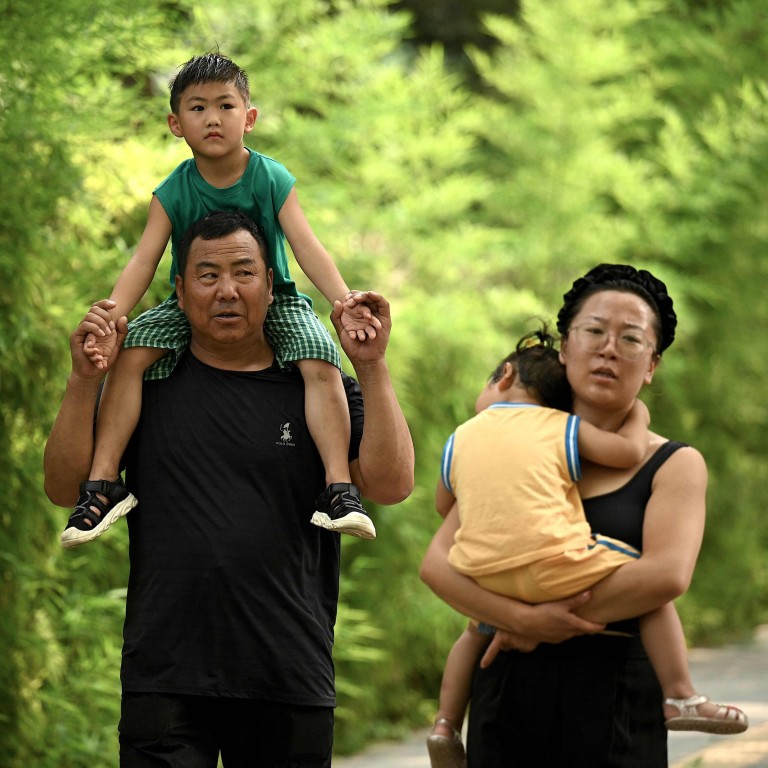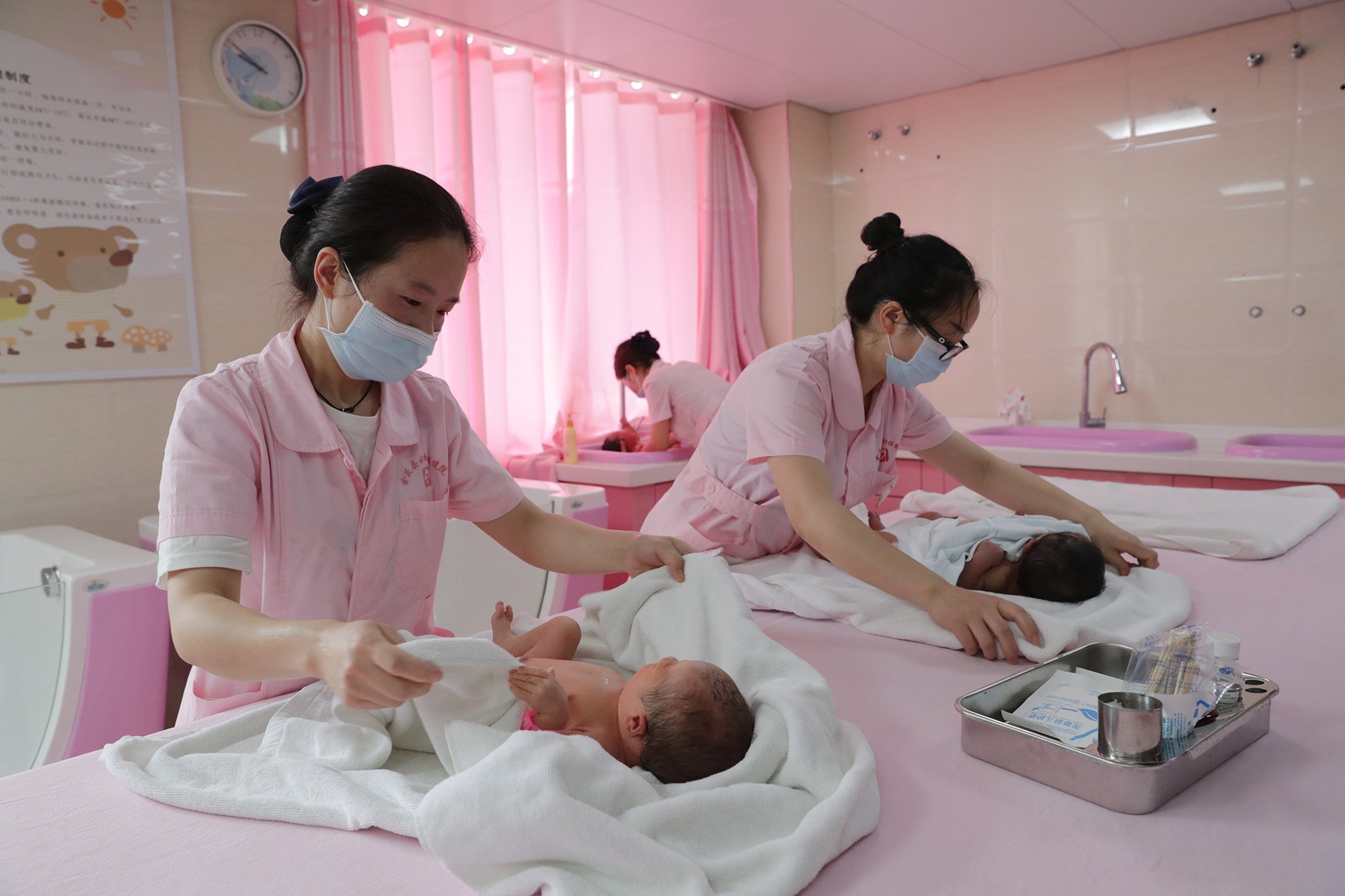
China tries to lift birth rate with new measures to make it easier to work and raise a family
- They include encouraging employers to allow flexible working arrangements, and preferential housing policies for families
- Policy document also calls for local governments to offer support on tax, insurance, education, housing and employment
China has introduced new measures to try to boost the nation’s low birth rate, including encouraging flexible working arrangements and preferential housing policies for families.
In a policy document issued by 17 ministries under the State Council in July – published by state media on Tuesday – the cabinet said an integrated approach would be taken to support marriage and make it easier for couples to have up to three children.
The new measures include encouraging employers to allow flexible hours and the option to work from home for employees with children.

Local authorities are to offer preferential housing policies for families with multiple children, such as providing bigger public housing flats.
The document also calls for families with multiple children that do not own their home to be allowed to withdraw money from the housing provident fund to pay their rent. Both employers and employees contribute to the fund, which was previously subject to a cap if used to pay rent.
Tax breaks are also to be offered for couples who have children aged under three – in addition to existing tax incentives for those with school-age children.
And the document calls for local governments to come up with a comprehensive package of support measures – covering tax, insurance, education, housing and employment – to encourage people to have children.
The country’s total fertility rate, or TFR – the number of children a woman is expected to have over her lifetime – is one of the lowest in the world at just 1.3 in 2020. That compares to a TFR of 1.6 in the United States that year and 2.3 in Indonesia, according to World Bank data.
China can boost births by improving living standards, demographer says
More than 30 per cent of China’s population is expected to be aged over 60 after 2035, the National Health Commission said in an article in Communist Party publication Qiushi on August 1. And with the average family size shrinking to 2.62 since 2020 – down by 0.48 since 2010 – there will be extra strain on aged care and childcare, it said.
In addition, it said an NHC survey had found that the willingness of women at childbearing age to have children “remains low”.
“The average number of children they want to have is 1.64, which is lower than 1.76 in 2017 and 1.73 in 2019,” the article said. “The heavy financial burden and shortage of childcare, as well as concerns about career development have become the main obstacles.”
Childcare is also addressed in the latest policy document, with employers encouraged to provide or sponsor nursery facilities for their staff and to include support to help them care for their children in employment contracts.
Speaking at a press conference on Wednesday, Hao Fuqing, deputy director of the department of social development at the National Development and Reform Commission, said the lack of childcare was a main deterrent to having children.
“In the cities, about a third of the families have the need for childcare, but in reality we don’t have enough supply, and it is indeed a shortage in terms of public childcare facilities.”
Du Xixue, commissioner of the department of population surveillance and family development at the National Health Commission, said China’s childcare facilities still lagged compared with the country’s goal of having 4.5 places for children under three per 1,000 population. By the end of 2021, there were 2.03 places in childcare facilities for children under 3 per 1,000 population.
He said the government hoped to solve the problems by exploring a model of childcare services provided by families, or by helping kindergartens extend their services to two and three-year-olds.
As Beijing tries to encourage Chinese to have bigger families, some local governments have started offering their own incentives to boost the birth rate.
For example, the Longwan district of Wenzhou, in Zhejiang province, last week announced that families with two children would receive 500 yuan (US$74) a month for each child aged under three. Those with three children would receive 1,000 yuan a month per child under three.

